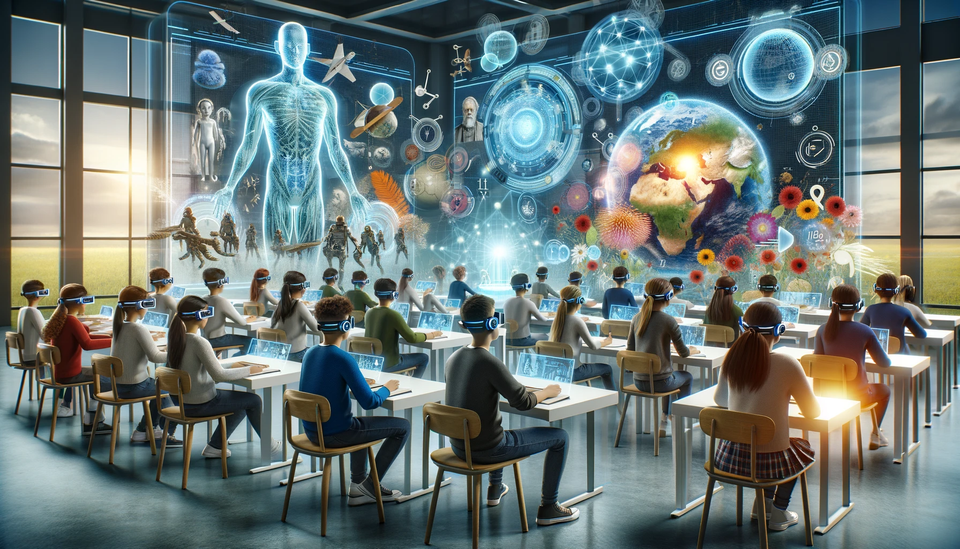Exploring the Future of Education with Apple Vision Pro

[ updated March 2024 ]
The integration of Virtual Reality (VR) into education represents a significant shift towards more immersive and interactive learning experiences. Apple's recent entry into the VR space with the Apple Vision Pro headset is a noteworthy development, poised to further enrich educational possibilities for middle and high school students as headsets become less expensive and the Apple ecosystem enables new types of education formats.
The Impact of VR in Education
VR technology introduces a new dimension to education, allowing students to explore complex subjects in a more engaging way. Through immersive experiences, learners can visualize concepts in 3D, from traversing the human body in a biology lesson to walking through historical sites. This approach not only makes learning more interesting but also enhances understanding by providing a practical context.
Apple Vision Pro: Potential to Elevate Educational Experiences
The launch of Apple Vision Pro marks a significant step forward in the potential for educational VR. With its seamless integration with Apple's ecosystem, this headset is designed to offer a robust platform for learning and new ways of teaching. It brings the potential for creating dynamic, experiential learning environments that can simulate real-world scenarios, promising education that is more effective and engaging.
How Apple Vision Pro Could Transform Learning
- Experiential Learning: Apple Vision Pro's immersive capabilities can enable students to learn through experience, offering a hands-on approach to education that can lead to better retention and understanding of complex subjects.
- Global Classroom: If Apple creates a lower cost, educationally targeted headset, students will have the ability to access educational content from anywhere in the world, providing equal learning opportunities to students irrespective of their location. While the initial investment might be high, the potential for future, more affordable models could broaden accessibility.
- Engagement and Motivation: By making learning visually appealing and interactive, future versions of the Apple Vision Pro can significantly increase student engagement and motivation, turning lessons into captivating experiences.
- Real-time Feedback: Utilizing VR technology for education can allow for immediate feedback, helping students quickly identify areas for improvement and adjust their learning strategies accordingly.
Challenges and Future Prospects
Despite the excitement around Apple Vision Pro's potential in education, challenges such as the cost of VR technology and the need for suitable infrastructure cannot be ignored. However, Apple's history of supporting education suggests the possibility of initiatives aimed at making VR more accessible to schools.
Conclusion
The introduction of the Apple Vision Pro offers a glimpse into the future of learning, characterized by immersive, interactive experiences that could significantly enhance how educational content is delivered and consumed. As technology evolves and becomes more accessible, it holds the promise of transforming traditional education into a dynamic, engaging, and effective learning journey for students worldwide.
